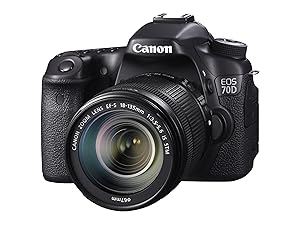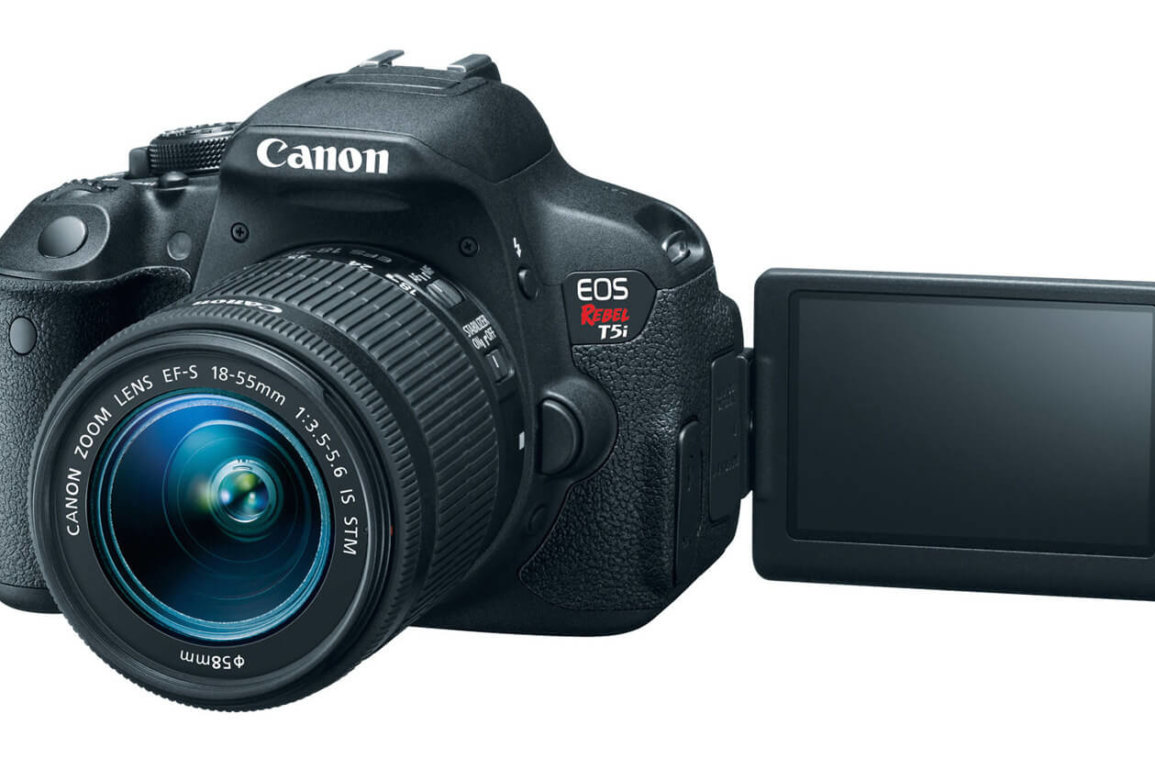I’ve taken some sweet photos over the last several years. A great shot starts with recognizing the subject and putting yourself in the right position to capture it. Framing the shot is key, too, and while I’m far from an expert, I think about frames in terms of thirds — if you’ve got mountains and sky, consider giving the mountains two-thirds and the sky one-third. Or if there’s a lake or dog or anything, look for ways to divide the subject into thirds, equally into thirds or with one element holding a two-thirds share.
There’s some rule here, some theorem or theory, but I forget what it is and I don’t really care. Thirds. Remember it.
The next most important thing is the tool. You need a camera. I’ll always take the camera I have on me as being the best camera to have — for example, an iPhone in the hand is better than a digital SLR at home.
But after that, you need a digital SLR, or at the very least, one of the hot new mirrorless system cameras. Let me explain.

Today’s digital SLR cameras are basically big cameras that take photos and HD video. There have two parts: the camera body and the lens. As you learn, you realize that different lenses give you different looks at your subject, but basically they’ll give you a big wide-open hole to collect a lot of light, focus that light, and light is what makes the photos. Take a look at that tiny little peephole on your phone . . . it doesn’t exactly collect light as well as a lens the size of a woman’s fist.
Besides the lens, there’s a brain in your camera, and smarter brains do a better job of capturing the light and storing it to memory. Digital SLR cameras tend to be the Einsteins of the photographic world. Fortunately, you don’t need to shell out $3,000-to-$6,000 for a professional grade DSLR camera — the brains in the low-end DSLRs are very very smart because there’s great competition in the space. For $500-to-$800, you can get started taking photos that will amaze your friends, make you proud of your moments, inspire you, and give you something that you can put in a frame on your wall.
The Key Behind Loving the DSLR
I’ve tried several small, handy pocket cameras, and each time I’ve been sorely disappointed. To start with, their brains were all too slow — I want fast autofocus and hitting the shutter button should result in an instant response, which you don’t get with dumb cameras. And focusing on a moving subject? Terrible. The iPhone’s camera is fantastic for landscapes, of course, but what about getting the shot when someone is talking with her hands or a buddy is balancing and nearly falling off of a rock? You get blurred flipper hands, which ruins the shot. After you work with a camera that responds, instantly, it’s hard to go back.
What I do love, though, is far more important than I ever considered possible in an age of digital screens: With a DSLR camera, you put your eye up to the camera and you look through the lens. The light comes into the lens and reflects off of a mirror to make it to your optical viewfinder (OVF) and into your eye. This results in a super-sharp and intimate feel for your subject. You can look at the LCD screens on some DSLRs and shoot, and in dumber cameras you don’t even have the choice, but once you start looking through a real lens and watching it snap into focus as you zoom in and out, you’ll hate going back.
There is an alternative to a DSLR that’s getting better, and it’s the latest mirrorless system cameras. With a DSLR, the mirror must quickly move out of the way when you take a shot. With a mirrorless system, there is no mirror, and the image you see in an electronic view finder (EVF) is the digital representation of your subject on a tiny little LED screen. Some of these EVFs are pretty sharp these days, and they actually give you an edge when you’re trying to shoot in low-light situations. As for focus, DSLRs tend to remain better at sports and moving objects, but the best mirrorless systems can compete well enough for most people. DSLRs from Canon and Nikon have hundreds of lens options. The downside? Bulk.
One time I went backpacking into the White Clouds in central Idaho, and I took a brand new Panasonic point-and-shoot camera with a big built-in zoom lens. It was super light. It was the second biggest mistake I made on the entire trip. The camera was slow to start up. It was slow to focus. It was slow to zoom. In bright light, looking at the LCD viewfinder was impossible. Looking through the fake optical viewfinder at a tiny LCD screen inside was a travesty of light. The photos seemed flat, distant, and lifeless.
I never took that camera with me again. In fact, I let small children play with it.
The photos are serviceable. But there’s another rule when it comes to landscape photos: It’s usually far more awesome in person. A quality camera with a big lens will get you closer to revealing that awesomeness, and for closeups of people, dogs, rafts, and bugs (not flowers, never flowers, ok, sometimes flowers) a great camera will capture an instant in time and reveal something true.
But Which One?
My favorite is Canon’s entry-level line of Rebel DSLRs because they are reasonably light and relatively inexpensive. If you break one while backpacking, you aren’t out of thousands of dollars. Similarly, Nikon’s entry-level cameras have many avid fans, too. You can’t really go wrong with either of these brands. There’s plenty of accessories, lenses, batteries, and true experts who can help you with the details or even repair.
If you can afford it, try to get an 18-135mm lens kit because it’s so damn versatile. Of course, if you think you’ll want to reach out to snag far away wildlife, you’ve got to get a dedicated zoom lens. When I was fishing with the bears in Alaska one year, there was some cool things I missed catching because I wasn’t packing a great zoom lens — for instance, a bear swimming across a deep hole in the river upright, sort of treading water like a human, somehow swimming vertically. It barely remains in my mind. I wish I had better photos of it.
The same goes for taking photos of kids in sporting events way out on the field or court of play. A DSLR with a zoom lens will help you get closeup shots without motion blur, often even in bad lighting.
All-in-all, of every single adventure or technology purchase I’ve ever made, the one that returned the absolute most value (and happiness) to me was the purchase of my first Canon DSLR Digital Rebel Camera. I’ve taken tens of thousands of photos with it, as well as shot several weddings, and it’s still going strong. Besides, when you shoot women with it and start busting out super fast shots, saying cheesy things like, “Work it, baby, the camera loves you,” you’re going to have a great time and make some great smiles. No way around it. The click, click, click of a real camera busting out shots always brings great expressions. Oh yeah, one more tip: More closeups. On everyone. They’re surprisingly amazing when you use a decent camera.
One last point: Don’t overthink these decisions. Any adventure-loving guy needs three cameras: an good smartphone camera, a waterproof, rugged camera, and a DSLR or mirrorless camera with a big high-quality zoom lens. Then, use the right tool for the job at hand. As for big-lens cameras, if your budget flirts a bit past $1,000, choose the Canon EOS 70D for all-around greatness, particularly for its improved focusing while shooting video. The D7100 may offer better stills and is perfect for Nikon fans. Any of the entry-level DSLRs will get the job done, but the Canon EOS Rebel SL1 may offer the best all-round smaller size, value, and video recording. If you want lots of shooting modes with high quality in the smallest body, try the Olympus OM-D E-M1.
Excellent Entry and Mid-Level DSLR Cameras:
- Canon EOS 70D — Fantastic mid-level DSLR, boasts weather-sealed body and much improved video focusing
- Canon EOS Rebel T5i — All-around excellent unit, pair it with the 18-135mm STM lens for greatest single-lens versatility
- Canon EOS Rebel SL1 — A mini DSLR in size, it has good video focusing on the fly
- Canon EOS Rebel T3i — Older generation almost as good as latest but at a lower price point
- Nikon D7100 — Fantastic mid-level DSLR, similar to Canon’s 70D, softer on video but generally regarded to hold a slight overall edge
- Nikon D5300 — Great value, shoots 1080p video at 60fps
- Nikon D3300 — Nearly as good as the 5300 at a better price point
Excellent Mid-Level Mirrorless System Cameras:
- Olympus OM-D E-M10 — This mirrorless system offers DSLR-like quality in a small body
- Fujifilm X-T1 — Mirrorless system offers cool EVF, great stills, not-so-great video for the price


